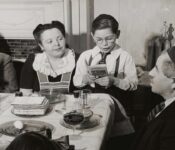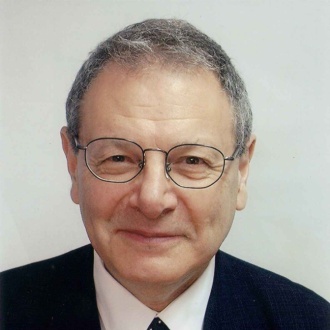Yitro : A Protest of Orange Stars
A Controversial Decision
The Orange Revolution, a campaign orchestrated in 2005 by Jews in Israel to protest the forced expulsion of Jews from Gaza, advised Jews to wear orange stars on their arm sleeves as a duel symbol of solidarity with the Jewish communities of Gaza and of protest against the policy of disengagement. These orange starts touched a sensitive nerve within the Jewish community.
Abraham Foxman, director of the Anti Defamation League, said that, “The honor of the Holocaust is being de-legitimized.” Israel President Moshe Katzav called the use of these stars “Unlawful.” The BBC reported that many see this protest as “trivializing Nazi Genocide.” In response, Moshe Freiman of Gush Katif was widely quoted, “I feel I am a victim of a new expulsion…a Shoah is being visited upon my home.
Speaking to Israel Television, Channel Two, Major General Elazar Stern labeled the use of the evocative emblem, “Madness. If what was done in the Holocaust resembles what we are doing to them,” he said, “It means the holocaust was not so terrible or unique.” He went on to declare that “These are not our people.”
Personally, I feel that use of the orange stars was inappropriate because of its inaccurate symbolic application. Nazism was not about expulsion, it was about extermination. If Gush Katif residents adopted a symbol of the Spanish Expulsion I would have been more sympathetic.
I would also support the symbolic use of the star if its symbol were directed against terrorists who destroy Jewish lives.
Many view comparisons between the holocaust and other tragedies, as trivializing the holocaust. To my view, invoking the holocaust for the purpose of saving lives enhances its memory.
The “Zachor” Doctrine
I believe that this common perception is rooted in the centrality of the “Zachor” (remember) doctrine, to holocaust education. Holocaust educators, for more than half a century, have worked to enshrine its legacy. They built monuments, museums and educational curricula to perpetuate the memory of holocaust-victims and to capture their unimaginable suffering
To solidify its horrible memory, the holocaust has been placed on a pedestal that towers way above the pyramid of world suffering. Holocaust educators have insisted that, for its systematic extermination, and sheer volume, the holocaust must stand alone.
From this perspective, holocaust exclusivity is indeed indispensable.  Comparisons between it and other genocides de-legitimize its justly earned pedestal.
Comparisons between it and other genocides de-legitimize its justly earned pedestal.
“Zachor” Must Lead To “Shamor”
In the fourth of the Ten Commandments the Torah uses the word “Zachor,” remember the Shabbos. (1) Our sages taught that Shabbos must be remembered throughout the week. Delicacies and new garments should be saved for Shabbos, days of the week should be counted in reference to Shabbos, one day left to Shabbos, two days left to Shabbos, etc. In short, nurturing the memory of Shabbos is a virtue in and of itself. (2)
But the Ten Commandments are recorded twice in the Torah. In the second recording the Torah replaces the word “Zachor” with “Shamor,” which means safeguard the Shabbos. This tells us that remembering should lead to safeguarding. (3)
The “Shamor” Doctrine
The “Zachor” doctrine in holocaust education is virtuous. But to my view, holocaust education should also contain a “Shamor” doctrine. This component must lead to concrete steps that would safeguard our future against similar threats.
Viewed through the “Shamor” prism, the holocaust is never trivialized when compared to other tragedies for the purpose of saving lives. On the contrary, the more lives it saves, the more hallowed is its memory.
“Zachor” = Love “Shamor” = Fear
In addressing the Shabbos “Zachor / Shamor” dichotomy, Nachmanidies cites the rabbinic dictum that “Zachor” instructs us to observe the Shabbos rituals (4) while “Shamor” instructs us to abide by its laws. (5)
Nachmanidies argues that “Zachor” is achieved through love but “Shamor” is achieved through fear. Love for G-d inspires us to remember him on Shabbos and observe its rituals. Fear of G-d deters us from violating his will through transgression of the Shabbos laws. (6)
I would argue that the “Zachor” component of holocaust education inspires a loving memory of its victims while the “Shamor” component deters us from complacency. It demands that we heed its fearful lessons and take necessary steps to safeguard against them.
Both must be taught, but emphasis must shift according to the safety concerns of the day.
Time Sensitive
The “Zachor” requirement to remember Shabbos applies to the weekdays leading up to Shabbos but the “Shamor” requirement to safeguard Shabbos commences with the onset of Shabbos. (7) In a similar vein, the holocaust “Zachor” doctrine must be emphasized during times of safety and security. But when Jewish lives are at stake the “Shamor” doctrine must be amplified.
Internal and External
G-d carefully chose the first text of the Ten Commandments according to the audience in attendance. Before the Ten Commandments were offered to the Jews G-d offered them to other nations. Each, for their own reasons, refused to accept.
For the sake of fairness G-d made the same offer to each nation. The text of the Ten Commandments that was offered to the Jewish nation was verbatim, to what the others were offered. Wanting to make the commandments relatively easy to accept, G-d didn’t include a requirement to safeguard the Shabbos in the initial text, only a requirement to remember it. Remembering Shabbos is far easier then safeguarding it.
The second text, which was written exclusively for the Jewish nation, was slightly amended. Certain that Jews would accept the safeguarding requirement of Shabbos, G-d included it in the later text. (8)
In application to Holocaust education one might infer that when amplifying the Holocaust lessons to the world at large it is appropriate to focus exclusively on the “Zachor.” But when teaching it to our own children we must view the “Shamor” doctrine as equal to that of the “Zachor,” if not more so. (9)
In Closing
Just before the fall of Jerusalem, the prophet Jeremiah proclaimed that Jerusalem would never fall if the Jewish community properly observed the Shabbos. (10) May we merit seeing a peaceful Israel, secure in its borders, beginning with the borders of Jerusalem, our people’s eternal capital.
Footnotes
- Exodus 20, 8
- Mechilta ibid. Bab. Talmud Betza 16a
- Deuteronomy 5, 12
- Mechilta Exodus 20, 8 Bab. Talmud Psachim 106a
- Bab. Talmud Eiruvin 96 a
- Nachmanidies Commentary to Exodus 20, 8 (Rabbi Moshe Ben Nachman Spain 1194-1270)
- Mechilta D’rashbi Quoted in Ramban Commentary ibid
- Kli Yakar Commentary to Exodus 20, 8 (R. Ephraim Shlomo Luntshitz, 1550-1619)
- These two approaches may at times be mutually exclusive. The same holds true for the words “Zachor” and “Shamor” in relation to Shabbos. The two descriptions, “Zachor” and “Shamor” teach us, among other points, that we must bring on Shabbos a few moments before sunset on Friday and end it a few moments after nightfall on Saturday night. Torah Temimah (Rabbi Baruch HaLevi Epstein1860-1941 – Pinsk) argues that this is a paradox. If the new day begins just before sunset then Shabbos should end at the same time on Saturday evening. Conversely, if the day doesn’t end till after nightfall then Shabbos shouldn’t begin till that time on Friday night. He concludes that this paradox cannot be resolved by human understanding, which is why the Talmud teaches (Bab. Talmud Shavuos 20b) that G-d uttered the words “Zachor” and “Shamor” simultaneously in a manner that the human mouth cannot utter and the human air cannot hear. For a mystical slant on the paradox see torah Ohr Exodus p. 71d (Rabbi Schneeur Zalman of Liadi,, founder of the Chabad Chassidic dynasty, 1745 – 1813)
- Jeremiah 17, 21-26
Tags: fear, Holocaust, Love, shabbat
























